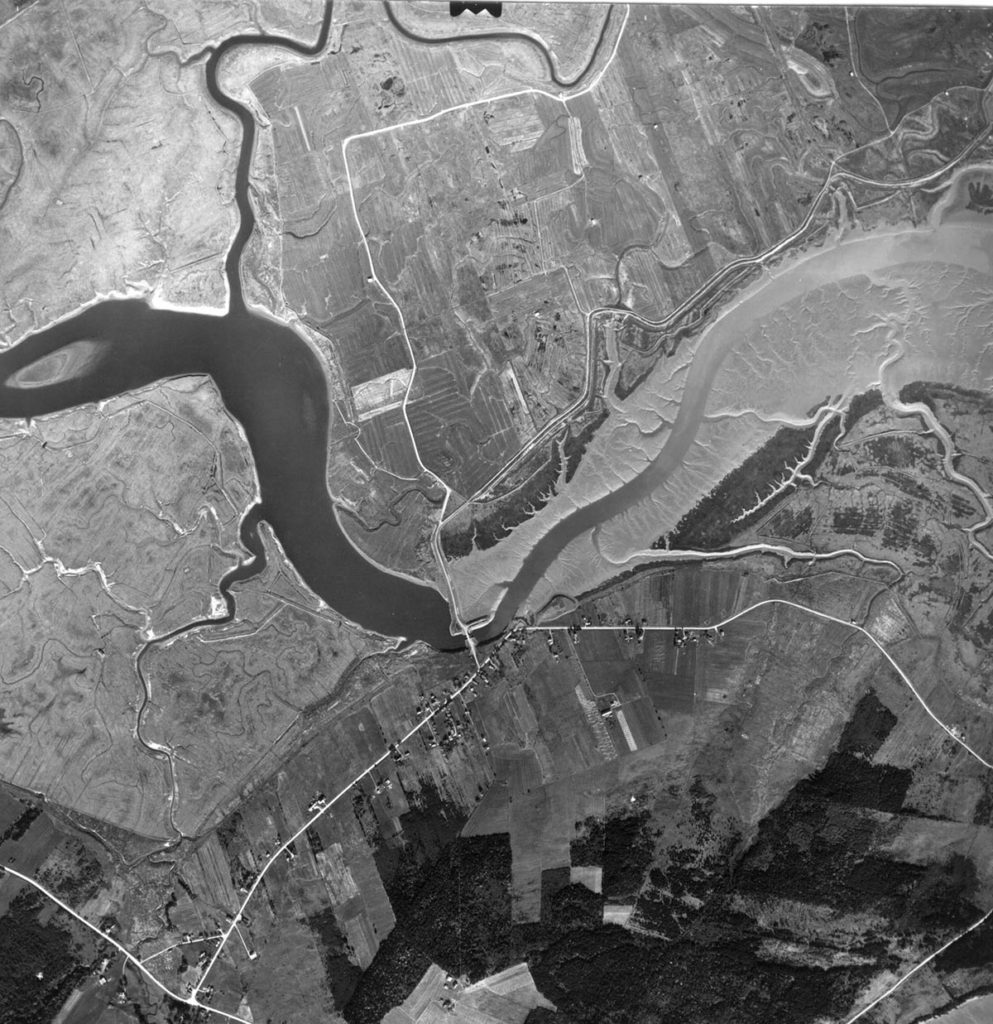
Third Nature
From early in its history, the Maritime Marshland Rehabilitation Administration (MMRA) considered constructing dams across a number of the major tidal rivers that flowed into the Bay of Fundy, figuring that farmland could be protected from the tides without the expense of reconstructing dykes and aboiteaux upstream. Before transferring control to the New Brunswick and Nova Scotia governments in 1970, the agency constructed five such dams, in the process creating a new landscape, a third nature, which was marked by the creation of fresh water headponds upstream, as well as the buildup of massive quantities of sediment immediately downstream from the dams, silt which would have previously been distributed along the length of the now-truncated rivers.
The impact of the MMRA’s dam construction program was most pronounced in regard to a structure, completed in 1968, which blocked the Petitcodiac River, in the process creating a new river crossing between Moncton and its growing suburbs. While the headpond created a fresh-water lake that became a central element of the lives of those suburban residents, the Petitcodiac Causeway also resulted in the destruction of fish stocks (unable to negotiate the dam and its fishway) and the narrowing of the river downstream from the dam (due to the accumulation of silt). Following a forty-year campaign to reopen the river, the dam’s gates were permanently opened in 2010, and the structure that housed those gates will soon be replaced by a bridge.




